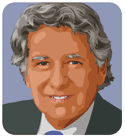Like most observers, both Catholic and non-Catholic, I was surprised to see Cardinal Jorge Mario Bergoglio from Argentina chosen as the new Pope. He was nowhere to be seen in the pre-conclave media hype. We in Canada saw Cardinal Quellet from La Motte, Quebec as a serious frontrunner. Yet we are observing since Bergoglio’s election and installation as Pope the signal that this new sovereign pontiff could surprise us and become an agent of change. Already, some media have labeled him the “People’s Pope.”
Most would agree, however, that on issues such as contraception, abortion and priest celibacy, little will likely change in this papacy. Many cardinals made this fairly clear in the hours following the election of Pope Francis. This being said, the need for change will not go away because this pope is more accessible and appears closer to his flock. For instance, issues regarding women in the church will have to be addressed. Dealing with the child abuse scandal must also be the object of stronger actions by the new Vatican administration, and must certainly be handled with greater compassion. Failure to deal with these matters will further marginalize the church as a moral authority in the world.
Yet, change in the Vatican can also come in different ways. While many reform-minded Catholics wish this new pope would be more forthcoming in modernizing some of the tenets of dogma, suffice it to say that Pope Francis has, in a few days, changed the style and the tone in the Vatican City. The choice of Francis as Bergoglio’s papal name was not a quick accident of fate. Photos displaying his care for the poor are both sincere and heartwarming. As we have seen every day since his election, the values attributed to St. Francis of Assisi are already evident in this new pope.Humility, social justice and simplicity, which seem to have been so absent from the leading messenger in the Vatican in recent years, have now become fashionable. Pope Francisspoke of mercy and forgiveness in his first Sunday Mass in Rome. He reached out to the large crowds wishing to see him and hear his words for the first time. Young people from different parts of the world dancing in St. Peter’s Square seemed energized and inspired. That speaks volumes.
With the growing church presence in the southern hemisphere, the choice of Pope Francis also sends some encouraging signals. This man is a product of his environment and his growth as a spiritual leader is intimately related to the realities he faced in his ministry. As mentioned earlier, he is close to the poor and believes that social justice is the best vehicle for the human spirit and for respect of humanity. He seems more pastor than pope.
In some ways, he reminds me of Pope John XXIII, a holy man who in five short years changed how the church interacted with other faiths. He remained a conservative on many tenets of dogma, but he brought hope, dialogue, and openness to diversity. After the events of World War II and the listless papacy of Pope Pius XII, John XXIII was a refreshing figure who inspired the young to get involved in helping those in need.
Pope Francis seems to be taking a chapter from John XXIII’s papacy, and in a short period of time has sparked a positive reaction from the many faithful and those who remain hurt by the church’s behavior of recent years. Increasingly, we see the faces of young people responding to the early intentions of Pope Francis’ papacy. Ultimately, this pope from the Americas could well be on the path to spread hope and change beyond the Americas. That in itself would be heroic and historic.





